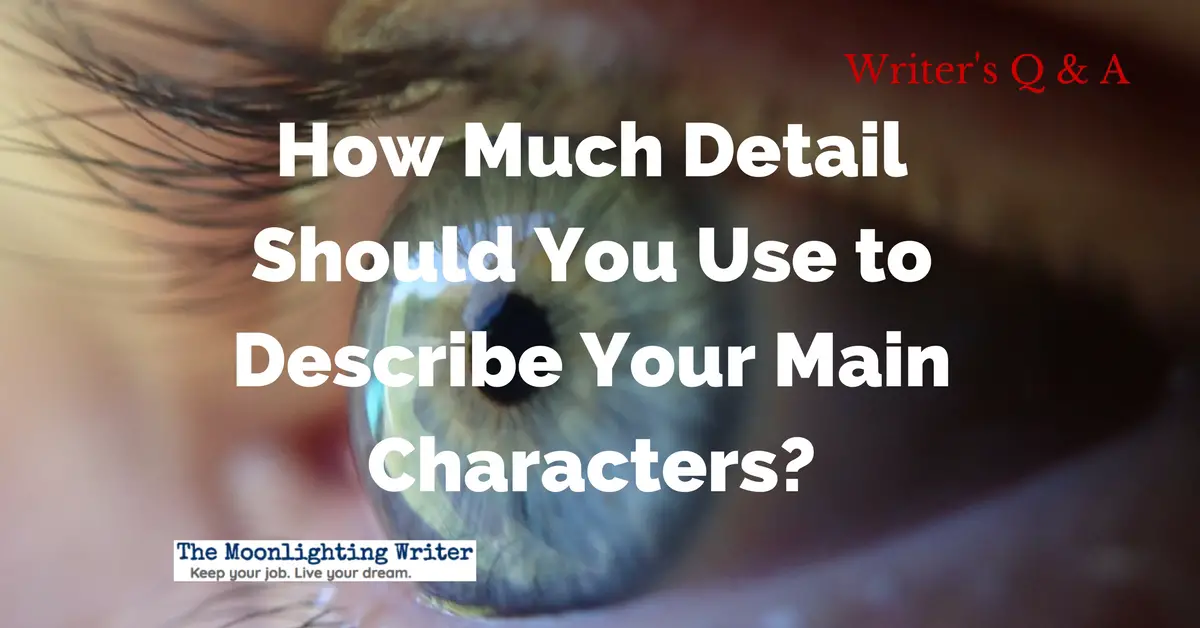Writers tend to fall in love with our main characters, and for good reason — we spend weeks, months, or years with them, and they drive our plots forward.
It’s not surprising, then, that our first instinct is to describe our protagonists’ physical features down to the last bit of peach fuzz on their cheeks.
But is that the best way to approach character description?
Truth is, if you want to wring the most out of your words and make the story’s world your reader’s world, there are probably better approaches.
Let’s take a look at some of the issues involved.
The Case for Deep Details
You can make the argument that no one in the world knows your character as well as you do.
You conceived him in your mind, you built his world around him, and you are telling his story.
So why wouldn’t you let the reader in on all the little details that only you can provide?
Once your readers know that Bill has hair the color of a shelled walnut, they’ll adore him just like you do. And your audience will find Audrey irresistible when they learn that her voice sounds just like Katie Holmes’s.
It’s a slam dunk.
Only … sometimes ..
Your Reader Wants to Make Up His Own Mind
One of the joys of reading fiction is that you, as the reader, are forced to conjure images of the scenes and people that make up a novel. And you get attached to those pictures, too, don’t you?
I mean, think about the last movie you saw that was based on a favorite book. Chances are pretty good that at least one character seemed way off to you, and it was because the actor’s portrayal just didn’t fit your version of the character.
It’s jarring, and it can ruin the whole experience for you.
You risk offending your reader in the same way even within your novel if you over-describe your characters. I mean, maybe I’m reading your vampire alien thriller and generally digging the vibe until you tell me that VLID 71 has blue eyes.
I mean, c’mon … VLID 71 is the most exotic character I’ve read since Snaggletooth at the Cantina, and you’re telling me he has blue eyes? Clearly, VLID 71 has green eyes.
Sheesh.
And that brings up one of the logistical problems with verbose descriptions.
If you’re going to describe them in detail …
Describe Your Characters Early
Readers start to form these images and make strong connections early in a book. By the opening “hook,” mental pictures are beginning to gel.
What that means for you as an author is that you need to get physical details of a character in place early on.
Maybe I’ll accept VLID 71’s blue eyes on page 10, but if you wait until page 100, I’m already invested in his green eyes. At that point, you may lose me completely, depending on how jarring the physical switch feels to me.
Of course, the problem with loading up your early pages with physical descriptions is that physical descriptions are boring. Those opening pages and chapters should sweep me along from scene to scene and leave me breathless for more.
So what’s the answer? You can’t write a book without describing your characters physically, can you?
Maybe. Maybe not.
But what you can do is …
Describe Only What’s Essential
Do VLID 71’s blue eyes have a material impact on your story?
They might, if he paralyzes his prey with his icy gaze. In that case, you probably want to mention them. But if his eye color doesn’t make any difference to the plot, let the reader decide for himself.
When it comes to character description, your story and your reader will be best served if you avoid detailed physical description unless those details really matter to your story.
A good starting rule of thumb here would be to consider whether a physical feature comes up more than once in your book. If not, and you only call it out in a descriptive passage, it’s a good candidate for the cutting room floor.
If, on the other hand, the feature is a recurring theme, it may be essential knowledge for you to pass along to your reader. Especially if other characters notice or interact with your protagonist’s feature, then it’s probably important.
For the most part, though, don’t be too eager to specify every wart and wrinkle on your beloved’s body.
When in doubt, try less physical description and allow your reader to step into your world.
How much detail do you put in your character descriptions? Let me know in the comments below.
